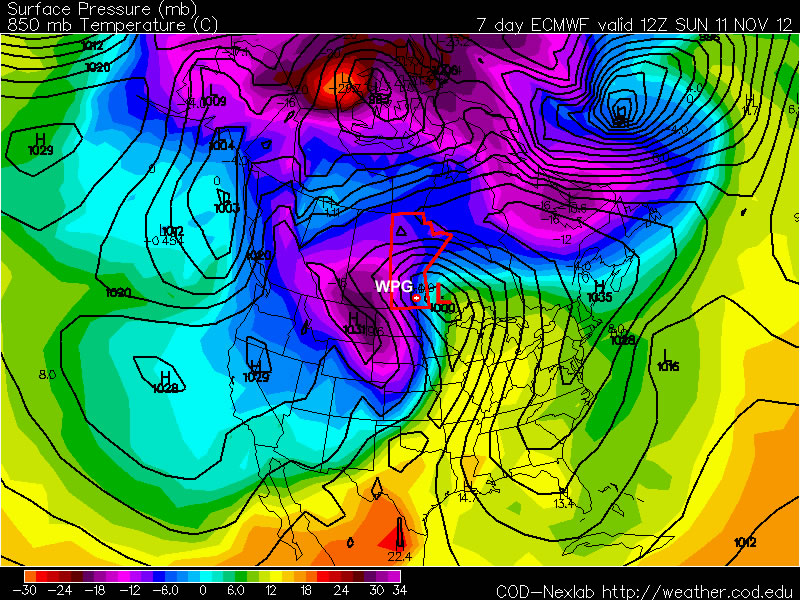A major Colorado low will bring an end to fall and transform our dry, dusty landscape into a winter wonderland this weekend. This storm will have major impacts on Southern Manitoba with heavy snow producing rapid accumulations and moderate strength winds producing low visibilities and drifting snow.
Snow will push into southwestern Manitoba this evening as a band of snow that has produced 10-20cm of snow in Southern Saskatchewan spreads eastwards into Manitoba. This snow will intensify over the SW portion of the province overnight and slowly spread eastwards. By tomorrow morning, snow should have pushed across all of southern Manitoba, with light snow falling over the RRV and Whiteshell.
On Saturday, the main low centre associated with this system will push into Minnesota, and things really start to fire up. A surge of moisture will wrap around the north side of this system back into Southern Manitoba resulting in heavy snowfall over the Red River Valley and Whiteshell.
The GEM-GLB model is beginning to have a fairly decent handle on things, however it’s track is likely a little too far south. Amounts seem fairly believable, though, which means widespread accumulations of 15-20cm of snow for all areas south of the Trans-Canada Highway. An axis of heavier snow will exist, likely from near the Pilot Mound region extending NE through (or just south of) Winnipeg and towards Bisset, where amounts will likely end up closer to 20-25cm.
There’s some indications that convective banded precipitation may develop as well; should this happen, there would likely be areas in the Red River Valley (too hard to say exactly where at this time) that could potentially see 30cm+ of snow (that’s a foot if you prefer those imperial measurements).
Winds will remain moderate, only around 30km/h with gusts to 50km/h, however with the intensity of the snowfall, there will likely be periods of near-zero visibility. It’s also very likely that roads will quickly become snow- and ice-covered, with some drifts developing over highways in open areas. Travel will be extremely treacherous on Saturday, and highway conditions will likely not improve until crews have been able to get out and start clearing things on Sunday.
If you have travel plans on Manitoba highways for this weekend, it is important to note that 10-20cm of snow will fall across much of Southern Saskatchewan today. Through yesterday and by the end of today, up to 2 feet of snow will have fallen through central and eastern Montana, and conditions will be equally poor in North Dakota today and tomorrow. This storm will be arriving a little later in NW Ontario, with the precipitation (likely with an area of freezing rain) arriving Saturday morning instead of Friday evening. More or less, unless you’re driving north, you’ll likely be hitting challenging road conditions no matter where you’re headed this weekend. If you do need to travel in a winter storm, make sure you carry a winter survival kit in your vehicle.






